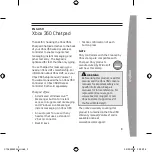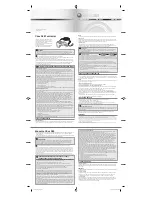
10-16
L90 LINE CURRENT DIFFERENTIAL SYSTEM – INSTRUCTION MANUAL
OVERVIEW
CHAPTER 10: THEORY OF OPERATION
10
The L90 incorporates an adaptive differential algorithm based on the traditional percent differential principle. In the
traditional percent differential scheme, the operating parameter is based on the phasor sum of currents in the zone and
the restraint parameter is based on the scalar (or average scalar) sum of the currents in the protected zone; when the
operating parameter divided by the restraint parameter is above the slope setting, the relay operates. During an external
fault, the operating parameter is relatively small compared to the restraint parameter, whereas for an internal fault, the
operating parameter is relatively large compared to the restraint parameter. Because the traditional scheme is not
adaptive, the element settings must allow for the maximum amount of error anticipated during an out-of-zone fault, when
CT errors can be high and/or CT saturation can be experienced.
The major difference between the L90 differential scheme and a percent differential scheme is the use of an estimate of
errors in the input currents to increase the restraint parameter during faults, permitting the use of more sensitive settings
than those used in the traditional scheme. The inclusion of the adaptive feature in the scheme produces element
characteristic equations that appear to be different from the traditional scheme, but the differences are minimal during
system steady-state conditions. The element equations are shown in the Operating Condition Calculations section.
10.1.20 Relay synchronization
On startup of the relays, the channel status is checked first. If channel status is OK, all relays send a special “startup”
message and the synchronization process is initiated. It takes about five to seven seconds to declare phase and frequency
lock loop (PFLL) status as OK and to start performing current differential calculations. If one of the relays was powered off
during the operation, the synchronization process restarts from the beginning. Relays tolerate channel delay (resulting
sometimes in step change in communication paths) or interruptions up to four power cycles round trip time (about 66 ms
at 60 Hz) without any deterioration in performance. If communications are interrupted for more than four cycles, the
following applies:
In two-terminal mode
With a second, redundant channel, relays do not lose functionality at all if the second channel is live.
With one channel only, relays have a five-second time window. If the channel is restored within this time, it takes about two
to three power cycles of valid PFLL calculations (and if estimated error is still within margin) to declare that PFLL is OK. If the
channel is restored later than five seconds, PFLL at both relays is declared as failed and the re-synchronization process is
initiated (about five to seven seconds) after channel status becomes OK.
In three-terminal mode
If one of the channels fails, the configuration reverts from master-master to master-slave where the master relay has both
channels live. The master relay PFLL keeps the two slave relays in synchronization, and therefore there is no time limit for
functionality. The PFLL of the slave relays is suspended (that is, the 87L function is not performed at these relays but they
can still trip via DTT from the master relay) until the channel is restored. If the estimated error is within margin upon
channel restoration and after two to three power cycles of valid PFLL calculations, the PFLL is declared as OK and the
configuration reverts back to master-master.
If two channels fail, PFLL at all relays is declared as failed, and when the channels are back in service the re-
synchronization process is initiated (about five to seven seconds) after channel status becomes OK.
Depending on the system configuration (number of terminals and channels), the 87L function operability depends on the
status of channel(s), status of synchronization, and status of channel(s) ID validation. All these states are available as
FlexLogic operands, for viewing in actual values, logged in the event recorder (if events are enabled in 87L menu), and also
trigger targets (if targets are enabled in the 87L function). These FlexLogic operands can to be used to trigger alarms,
illuminate LEDs, and be captured in oscillography.
However, the
87L BLOCKED
FlexLogic operand reflects whether the local current differential function is blocked due to
communications or settings problems. The state of this operand is based on the combination of conditions previously
outlined. As such, it is recommended that it be used to enable backup protection if 87L is not available.
The
87L BLOCKED
operand is set when the 87L function is enabled and any of the following three conditions apply:
•
At least one channel failed on a two or three-terminal single-channel system, or both channels failed on a two-
terminal two-channel system
•
PFFL has failed or is suspended
















































